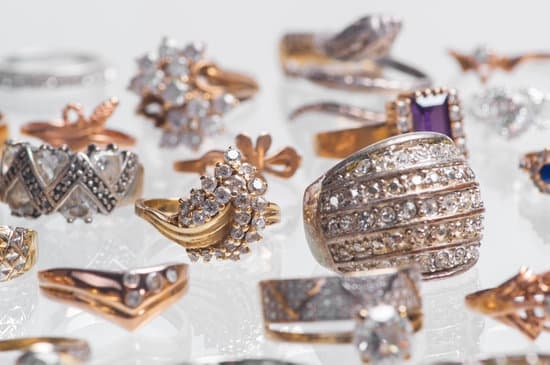Jewelry has always held a captivating allure, enchanting us with its beauty and symbolism. From ancient civilizations to the modern world, jewelry has played a significant role in various cultures around the globe. The history of jewelry making is an intriguing journey that spans centuries, revealing the remarkable evolution of this art form.
Throughout history, jewelry making has been a means of personal expression and a reflection of cultural values. It has left behind an enduring legacy, with each era contributing unique styles and techniques to this extraordinary craft. The study of the history of jewelry making allows us to understand not only the artistic and technical advancements throughout time but also provides insights into the social, economic, and cultural contexts in which these masterpieces were created.
Unearthing the roots of jewelry making takes us back to prehistoric times when our ancestors adorned themselves with simple materials such as shells, bones, and stones. These early forms of adornment carried great significance, whether as symbols of status or protective talismans. As civilizations developed, so did their techniques and materials, leading to groundbreaking advancements in craftsmanship.
This article delves into the enthralling history of jewelry making, examining key periods such as ancient Egypt’s luxurious elegance, Mesopotamia’s innovative methods, Greece and Rome’s opulent opus, the Renaissance’s revival of ancient inspirations, the Industrial Revolution’s transformative impact, and contemporary innovation pushing boundaries today. Join us on this captivating journey through time as we explore how jewelry has evolved from simple adornments to works of art that continue to captivate our imagination.
Prehistoric Beginnings
Evidence of Early Jewelry Making
The history of jewelry making can be traced back to prehistoric times, where early humans began adorning themselves with various materials found in their natural surroundings. Archaeological evidence suggests that shells, bones, and stones were among the first materials used for personal adornment. These early forms of jewelry served both practical and symbolic purposes, with shells being worn as necklaces and bones used as amulets for spiritual protection.
Cultural Importance
During this era, jewelry held immense cultural importance. It was not only a means of personal expression but also played a role in rituals and ceremonies. From fertility symbols to status indicators, these primitive adornments reflected the beliefs and values of the cultures in which they were created. The choice of materials and designs often carried deep symbolic meanings that were understood within the community.
Evolution of Techniques
As time progressed, early artisans developed new techniques for crafting jewelry. Stone carving allowed for intricate designs to be etched onto pendants and bracelets. Ancient metalworking techniques such as hammering, casting, and soldering paved the way for more sophisticated metal ornaments. These advancements set the foundation for future civilizations to further explore the artistry of jewelry making.
Today, we can look back at these prehistoric beginnings as the nascent stage of a craft that has evolved significantly over time. The use of natural materials in early jewelry making reminds us of our connection to nature and our desire to adorn ourselves with beautiful objects. As we delve deeper into the history of jewelry making, we will uncover how different cultures throughout history have contributed to its development and evolution.
Ancient Egypt
In the rich tapestry of jewelry-making history, few civilizations have left as indelible a mark as ancient Egypt. Renowned for its elegance, symbolism, and unwavering devotion to craftsmanship, Egyptian jewelry holds a special place in the annals of adornment. From stunning gold pieces to intricate gemstone creations, the jewelry of ancient Egypt reflected not only worldly opulence but also deep cultural and religious significance.
Craftsmanship in ancient Egypt reached unparalleled heights, with skilled artisans dedicated to creating exquisite pieces that transcended mere accessories. Gold was highly prized for its association with the sun god Ra, symbolizing eternal life and divine power. The abundance of gold deposits in Egypt allowed for its extensive use in creating intricate necklaces, bracelets, rings, earrings, and ornamental headdresses. It is estimated that over 2 tons of gold were used to craft Tutankhamun’s burial mask alone.
Precious gemstones were also cherished by the ancient Egyptians. Lapis lazuli from Afghanistan and turquoise from Sinai held particular importance due to their vibrant blue hues associated with the heavens. These gemstones were often intricately carved or set into jewelry pieces alongside other materials such as ivory, silver, and faience. Faience was a type of glazed ceramic that mimicked semi-precious stones like turquoise and lapis lazuli.
The types and styles of jewelry varied among different social classes in ancient Egyptian society. While pharaohs flaunted extravagant jewels encrusted with precious gemstones and adorned themselves with intricate collars known as “usekh,” ordinary citizens wore simpler pieces made from basic materials such as beads, shells, or stones.
Jewelry served not only as a symbol of wealth but also had protective functions attributed to it. Amulets shaped like sacred symbols or deities were believed to ward off evil spirits and bring good luck to the wearer.
| Ancient Egyptian Jewelry Materials | Ancient Egyptian Jewelry Styles |
|---|---|
| Gold | Collars (usekh) |
| Precious Gemstones (Lapis Lazuli, Turquoise) | Amulets |
| Faience (Glazed Ceramic) | Earrings |
Ancient Egyptian jewelry was not merely a form of personal adornment; it held deep symbolism and religious significance. The use of symbolic motifs – such as scarabs representing rebirth and eternity, or the ankh symbolizing life – reflected the ancient Egyptians’ spiritual beliefs and their perception of jewelry as conduits for divine protection and blessings.
The enduring legacy of ancient Egyptian jewelry can be seen in modern-day designs that draw inspiration from this influential era. The allure and beauty of these ancient creations continue to captivate people around the world, reminding us of our shared human history and the timeless appeal of jewelry as both art and expression.
The Mesopotamian Legacy
Mesopotamia, often referred to as the “cradle of civilization,” holds a significant place in the history of jewelry making. This region, encompassing modern-day Iraq and parts of Syria and Turkey, witnessed the emergence of advanced civilizations like the Sumerians and Babylonians. Their contributions to jewelry making are noteworthy and have left a lasting impact on this art form.
The Sumerians were among the first to develop intricate jewelry-making techniques, setting the foundation for future civilizations. They used various materials such as gold, silver, gemstones, and shells in their creations. The significance of jewelry in their culture was evident through its representation in religious rituals and ceremonies. One particular piece that exemplifies their craftsmanship is the famous “Ram in a Thicket” statuette, depicting two standing figures adorned with earrings made of gold and lapis lazuli.
As the Babylonian Kingdom rose to power, so did its influence on jewelry making. The Babylonians excelled in metalworking skills, particularly goldsmithing and gemstone carving. They showcased their expertise by crafting intricate pieces adorned with vibrant gemstones such as carnelian, lapis lazuli, and amethysts. What makes Babylonian jewelry distinctive is their attention to detail and emphasis on symbolism. Many designs featured animal motifs symbolizing gods or protective deities.
One characteristic feature found in both Sumerian and Babylonian jewelry is the use of cylinder seals. These small engraved cylindrical stones were worn as pendants or attached to clothing using cords. Cylinder seals played an essential role in Mesopotamian society as they served as personal signatures or identification marks when pressed onto clay tablets.
To better understand the evolution of Mesopotamian jewelry making throughout history, an analysis of its unique stylistic features and designs is crucial.
| Stylistic Features | Designs |
|---|---|
| Cylinder Seals | -Engravings of various motifs such as animals, gods, or royal emblems |
| Symbolism | -Use of animal motifs to represent deities or protection |
| Natural Materials | -Incorporation of gemstones like lapis lazuli, carnelian, and amethysts\n-Utilization of shells and bones in earlier designs |
Classical Greece and Rome
During the classical period, the civilizations of Greece and Rome made significant contributions to the field of jewelry making. Jewelry in these ancient societies was not only a means of personal adornment but also served as a way to signify social status and wealth. The craftsmanship techniques developed during this era continue to inspire modern designers today.
The Significance of Jewelry in Greek and Roman Society
In both Greek and Roman cultures, jewelry held great importance beyond its aesthetic value. It played a crucial role in societal hierarchies, acting as a visible marker of wealth and social status. Wealthy individuals would adorn themselves with elaborate pieces made from precious metals such as gold and silver, often adorned with gemstones like emeralds, rubies, or pearls.
Techniques and Styles
One technique that gained prominence during this time was filigree, which involved intricate designs created by twisting thin wires of precious metal. Another technique widely used was granulation, where small beads or granules of metal were meticulously arranged on a surface to create patterns or images. These techniques allowed for exquisite details in jewelry pieces.
Greek and Roman artisans also had a predilection for incorporating colored gemstones into their designs. They sought out stones from various regions, including topaz from Egypt, amethyst from Persia, and garnet from India. The use of such vibrant gemstones added sophistication to the overall design.
Enduring Influence
The influence of classical Greek and Roman jewelry extended far beyond their respective periods. The elegant designs remain highly sought after today, with craftsmen worldwide drawing inspiration from their timeless styles. From delicate gold bands to intricately designed necklaces, the aesthetics established by these ancient civilizations continue to captivate contemporary admirers who embrace the beauty and opulence that transcends time.
As we move forward in exploring the history of jewelry making, it is essential to recognize artists’ contributions from these ancient civilizations who laid the foundation for future developments. Next, we will delve into the revival of ancient jewelry-making techniques during the Renaissance period and its lasting impact on the world of jewelry design.
The Renaissance and Beyond
During the Renaissance period, there was a significant resurgence of interest in the art and culture of ancient civilizations. This newfound fascination extended to jewelry making as well, leading to a revival of ancient techniques and designs. Artisans drew inspiration from ancient Greek, Roman, and Egyptian jewelry, creating pieces that paid homage to the past while also incorporating their own creative interpretations.
One notable aspect of Renaissance jewelry was the incorporation of symbolism. Just like their ancient predecessors, Renaissance jewelers used symbols to convey hidden meanings and messages. These symbols could represent love, loyalty, or power, among other things. For example, one popular symbol during this period was the snake, which signified eternity or eternal love.
Another key characteristic of jewelry made during this time was its personal nature. Jewelry became a way for individuals to express their identity and show their social status. Custom-made pieces were highly sought after by the elite, allowing them to showcase their wealth and taste. Intricate engravings and gemstones were often used to create one-of-a-kind pieces that reflected the individual wearer’s personality.
Beyond the Renaissance period, the fascination with ancient inspirations continued to shape jewelry making throughout history. In subsequent eras such as the Baroque, Rococo, and Victorian periods, jewelers continued to draw inspiration from antiquity while adding their own unique touches. The designs became more elaborate and ornate as new techniques were developed.
Industrial Revolution
During the Industrial Revolution, which took place from the late 18th century to the early 19th century, the landscape of jewelry making underwent a radical transformation. This period marked a significant shift from traditional artisanal practices to mass production techniques, forever changing the way jewelry was created and consumed.
One of the key impacts of the Industrial Revolution on jewelry making was the introduction of machinery and new manufacturing processes. With advancements in technology, intricate tools were developed that allowed for more precise and efficient production. This led to increased productivity and a wider availability of jewelry for people across different social classes.
Mass production became possible through the use of assembly lines and interchangeable parts. Jewelry components could now be made in large quantities, allowing for faster production times and lower costs. This democratized access to jewelry, making it more affordable for a larger portion of society. Moreover, standardized sizing became prevalent during this time, enabling jewelers to create ready-to-wear pieces that could easily fit a broader range of customers.
The Industrial Revolution also brought about innovations in materials used for jewelry making. The discovery and utilization of new metals such as platinum and alloys like white gold expanded the possibilities for design and durability. Additionally, advancements in gemstone cutting techniques enabled jewelers to showcase gems with greater brilliance and precision.
Overall, the Industrial Revolution revolutionized jewelry making by introducing mass production techniques, expanding access to jewelry, and pushing forward technological advancements that would shape the industry for years to come. These changes not only transformed the way jewelry was produced but also had profound effects on consumer culture, leading to widespread availability and affordability of beautiful adornments for people all around the world.
Contemporary Innovation
In today’s ever-evolving world, the art of jewelry making continues to push boundaries and embrace innovation in order to create unique and breathtaking pieces. Advancements in technology, sustainable practices, and a renewed focus on fine craftsmanship have propelled contemporary jewelry design into new realms. This section will explore the exciting developments within the realm of jewelry making, showcasing how designers are revolutionizing the industry.
One notable area of innovation in jewelry making is the use of unconventional materials. Traditional materials such as gold and gemstones are now being combined with unexpected elements like acrylic, rubber, and even recycled materials.
Designers are challenging conventional norms by experimenting with these alternative materials, resulting in strikingly bold and conceptual designs that redefine what we consider “jewelry”. Through this experimentation, contemporary jewelry makers are not only pushing artistic boundaries but also contributing to a more sustainable approach within the industry.
As technology continues to advance at an extraordinary pace, it has become an integral part of modern jewelry making. Techniques such as computer-aided design (CAD) and 3D printing have opened up a world of possibilities for designers. CAD allows for intricate detailing and precision in creating complex designs that were once thought impossible by hand alone.
3D printing has revolutionized the production process by allowing designers to quickly prototype their ideas without the need for expensive molds or extensive manual labor. These technological advancements have not only made jewelry production more efficient but have also empowered artists to bring their most intricate visions to life.
Additionally, contemporary jewelry makers are embracing sustainability as a guiding principle in their work. With growing awareness of environmental issues, many designers are opting for ethically sourced gemstones and fair trade metals to ensure their creations have a positive impact on both people and the planet. Recycling precious metals from old or damaged pieces is also becoming more common, reducing waste while giving new life to existing materials.
Furthermore, some artists are incorporating sustainable practices throughout their entire production process, such as using renewable energy sources in their workshops or implementing eco-friendly packaging solutions. By prioritizing sustainability, these designers are setting an example for the industry while creating breathtaking works of wearable art.
Conclusion
Throughout history, jewelry making has captivated cultures around the world and left a lasting legacy. From its humble beginnings in prehistoric times to the present day, the artistry and craftsmanship of jewelry have evolved, reflecting the changing beliefs, values, and technological advancements of each era. The history of jewelry making reveals not only our fascination with beauty and adornment but also serves as a tangible link to our past.
Jewelry has always held immense cultural significance. In ancient times, it was used as a means to express personal identity and social status. Whether it was the ornate pieces worn by Egyptian Pharaohs or the intricate designs of Mesopotamian civilizations, each culture imbued their jewelry with symbolism and meaning. It is through these beautiful creations that we can gain insights into the beliefs, aesthetics, and values that shaped these societies.
The enduring allure of jewelry lies in its ability to transcend time and connect us with our ancestors. Today, contemporary jewelers continue to push the boundaries of design while drawing inspiration from historical techniques. They incorporate modern materials, innovative technologies, and sustainable practices into their creations. As we admire these contemporary pieces, we are reminded of the rich history that informs every facet of jewelry making.
The history of jewelry making is a testament to human creativity and ingenuity. It showcases how our desire for personal adornment has evolved over thousands of years while remaining an integral part of our cultural heritage. So next time you put on your favorite piece of jewelry or admire someone else’s, take a moment to appreciate not only its beauty but also the timeless legacy it represents.
In conclusion, the history of jewelry making is a journey through time marked by innovation, symbolism, and cultural appreciation. From ancient civilizations to modern-day designers, each era has contributed something unique to this art form. Jewelry continues to be both a form of personal expression and a tangible link connecting us with our ancestors.
Its allure is everlasting as it carries with it the stories and craftsmanship of generations past. Delve into the captivating history of jewelry making, and you will uncover a world brimming with beauty, culture, and tradition waiting to be discovered.

Welcome to my jewelry blog! My name is Sarah and I am the owner of this blog.
I love making jewelry and sharing my creations with others.
So whether you’re someone who loves wearing jewelry yourself or simply enjoys learning about it, be sure to check out my blog for insightful posts on everything related to this exciting topic!





